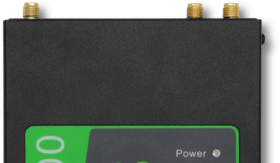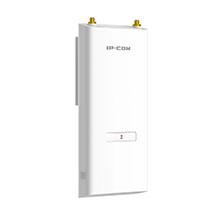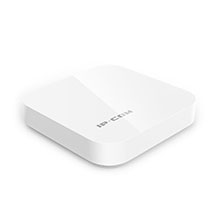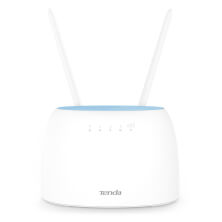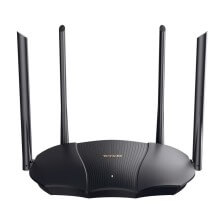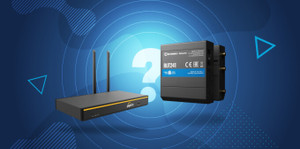The 802.11ac WiFi Standard Explained
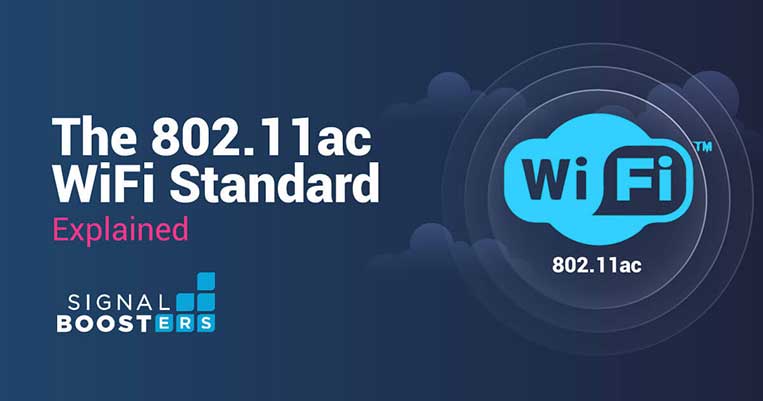
Wireless networking is the most convenient way of accessing the internet. Every year the number of users and devices accessing the internet increases. As a result, many people experience speed slow-downs and unreliable wireless connections. To reduce those challenges and improve your wireless experience, the WiFi-Alliance set up a new WiFi standard - 802.11ac.
If you struggle with poor cellular signal in addition to WiFi, see how a cell phone signal booster can help.
Installers and Integrators
Take advantage of our system design and installation services. Learn more or call us for a free consultation: 1-800-969-8189
What is 802.11ac?
The 802.11ac standard, also known as WiFi 5 and Gigabit WiFi, is the 5th generation of WiFi. It’s an upgrade from IEEE 802.11n, or WiFi 4. WiFi 5 was designed to deliver improved speeds, WiFi performance, and better range to keep up with the growing number of users, devices, and data use.
A Short History of the 802.11ac Standard
The purpose of IEEE 802.11">WiFi standards is to improve the wireless local area network (WLAN, SD WAN, or Wireless LAN) user experience. New wireless standards are developed to fill gaps in the existing standards and to account for new technology.
The 4th WiFi generation (IEEE 802.11n) saw a big increase in the number of users and devices using wireless internet. This resulted in speed slowdowns and increased latency. To improve the 802.11n standard, the Institute of Electrical and Electronic Engineering developed the IEEE 802.11ac standard from 2008 to 2013. The improvements would result in a better WLAN experience - faster speeds, more bandwidth, and less latency. The updated standard was published in December 2013.
Two waves of products were launched using the 802.11ac standard. The first wave was introduced in 2013 and the second in 2015. The difference between these product waves will be discussed later in this article.
How Fast is the 802.11ac Standard?
Maximum internet speeds are theoretical. They are based on the best conditions - potential interference is not factored in. 802.11ac has a theoretical maximum speed of 1,300 Mbps (1.3 Gbps) - 2,300 Mbps (2.3 Gbps), but this will depend on real world conditions. It was the first WiFi standard developed that could theoretically achieve gigabit speeds opposed to megabit speeds. In contrast, 802.11n had a theoretical speed of 450 Mbps (0.45 Gbps). This meant WiFi 5 could be up to 3x faster than the earlier WiFi generation under best conditions.
In the real-world, data rates are susceptible to change due to the environment. Obstacles like building material, walls, doors, floors, and furniture can interfere with the signal strength, resulting in the speed slowing down.
Forbes states that the fastest real-world 802.11ac speeds recorded are around 720 Mbps (0.72 Gbps). In contrast, the maximum speed recorded for 802.11n was 240 Mbps (0.24 Gbps). While it’s true that WiFi 5 is 3x faster than WiFi 4, the speeds are much lower than the theoretical ones.
802.11ac Key Features
802.11ac built on the features offered by 802.11n to improve throughput, bandwidth, and speed.
Wider WiFi Channels
There are two GHz frequency bands that routers and wireless devices use to communicate with each other – 2.4 GHz and 5 GHz. Most WiFi devices are dual-band, meaning that they can use both frequency bands. The difference between the two bands is their range, speed, and bandwidth. The 2.4 GHz band provides more coverage but slower speeds. On the other hand, the 5GHz band provides faster speeds but less coverage.
Within those frequency bands, there are smaller bands that stand for WiFi channels. A WiFi channel is what wireless devices use to send and receive data. The width (measured in MHz) dictates how much data can pass through the channel and at what speed. The traditional channel width is 20 MHz, and channel bonding is used to increase the channel widths. Wider channels tend to be associated with more data transfer and faster speeds – as long as the channel is not crowded and experiencing interferences.
To better explain this, think of a channel as a road. Channel bonding is like adding lanes to it, allowing for more cars and faster overall speed.
The 802.11n standard only supported 20 MHz and 40 MHz channels (bonds two 20 MHz channels). The first 802.11ac product wave supported a maximum of 80 MHz channel bandwidth. To improve on the first wave, the second wave of products took channel width to a different level. Wave 2 supports up to 160 MHz channel bandwidth. The 160 MHz channel improvement was achieved by bonding adjacent channels or non-adjacent 80 MHz channels (to create the 80+80 MHz channel). As a result, it improved throughput significantly.
MIMO – Multiple-Input Multiple-Output
MIMO technology uses multiple transmitters and receivers (antennas) to send data to multiple WiFi devices simultaneously.
Originally, 802.11n routers used SU-MIMO (Single-User Multiple-Input Multiple-Output), meaning that the router could only communicate with one connected device at a time. When 802.11ac Wave 1 was launched, there had not been any improvements done to the SU-MIMO technology. Wave 2 saw these improvements come to light.
Wave 2 802.11ac routers adopted MU-MIMO (Multi-User Multiple-Input Multiple-Output). Routers could now send information to multiple devices at the same time. The new technology only supported downlink (communication from the router to wireless devices) MU-MIMO, they could only send data to the client devices simultaneously. The information packets being sent to the wireless router (uplink) could only be sent one by one. This new technology improved speeds and supported more connected devices.
IP-COM Wi-Fi Access Point iUAP-AC-M
- 5 dBi high-gain omni-directional antennas
- Concurrent dual band data rate at both 2.5GHz and 5GHZ
- 656ft coverage radius
- MU-MIMO features allows multiple device connections
- Strong, stable signal with built in RF
- IP65 rated external housing
- DC power supply
The iUAP-AC-M access point can blanket those hard-to-reach indoor and outdoor areas with reliable WiFi. Don't let WiFi dead spots slow down your business. With MU-MIMO, the iUAP-AC-M access point supports many devices at the same time. Users will experience faster speeds and less lag while working or relaxing.
Spatial Streams
All routers and wireless devices have antennas, the number of antennas decides the number of spatial streams (data signals) that can be sent and received at the same time. Spatial streams are represented as 1x1, 2x2, 3x3, 4x4, etc. For example, a 2x2 spatial stream stands for two antennas supporting two data streams.
Both 802.11n and 802.11ac devices had this technology, the difference was the number of spatial streams they supported.
WiFi 4 had a maximum of 4 spatial streams and the first wave of WiFi 5 had 3. How does spatial streaming work if they used Single-User MIMO and could only communicate with one client at a time? Mobile devices can support a certain number of streams. Many smartphones only support 1x1 spatial streams, some higher-end smartphones and laptops support 2x2 spatial streams, some computers support 3x3 spatial streams, and there aren’t many devices that support 4x4 spatial streams.
Let's say you have an 802.11n router with three antennas. This router has three spatial streams, and can only give them to one device at a time. If an iPhone (1x1) and a Mac (2x2) are requesting information at the same time, they will have to stand in line to receive it. The router will use one of its antennas to talk to the iPhone. After finishing with the phone, the router will use two of its antennas to talk to the Mac. Multiple spatial streams can be used to communicate with one client at a time, never with multiple devices. Your three-antenna router wasn’t able to make use of its potential due to only being able to interact with one device at a time.
To help improve the communication process and speeds, 802.11ac Wave 2 routers supported 4 spatial streams (later, up to 8). With the help of Multi-User MIMO, the clients requesting information did not have to wait in line. The router could give one antenna to the iPhone and two to the Mac at the same time. More information could be transmitted and received simultaneously. In addition, since the signal is being given more efficiently, power consumption is reduced which improves the battery life on the connected devices.
Beamforming
Before beamforming was used, the antennas on the routers would send signal in all directions. In a sense, this would cause the signal to go to waste because it was being transmitted into unnecessary areas. Therefore, the wireless signal had less range and was more susceptible to speed slowdowns and interferences. Beamforming is used to improve the wireless signal between the WiFi router and the connected devices. It focuses the signal (known as smart signal) in the direction of the connected devices rather than transmitting it into every direction. Beamforming helps improve the range, speed, and reduce interference.
Beamforming technology existed when 802.11n was developed, but had not yet been standardized. There were lots of different beamforming versions available, but order for beamforming to work the router and the clients needed to share the same beamforming technology. Unfortunately, with so many beamforming versions, not all WiFi 4 manufacturers used the same one.
WiFi 5 standardized explicit beamforming. With the new standards, all manufacturers incorporated the same version. Both waves of WiFi 5 products support what’s called “explicit” beamforming.
More Data Transfer with 256-QAM
Wireless devices use sound frequencies to communicate with each other. When a device transmits data via sound waves, it modulates the frequency of a specific radio channel. The sound wave is made up of bits of binary code (a series of 0s and 1s). The receiving device decodes the sound waves to understand what is being said. This is how all wireless internet data is transferred.
For example, let’s say you open Google. The transmitting signal modulates the frequency of your radio channel to communicate with the router. The router decodes the 0s and 1s to understand your request. After the information is gathered, the same process will send the information to your computer. When your computer decodes the 0s and 1s, the Google homepage will be displayed on your screen. This process is known as quadrature amplitude modulation (QAM).
WiFi 4 used 64-QAM, meaning that devices sending information could only send 6 bits at a time. The QAM technology was improved for WiFi 5. WiFi 5 uses 256-QAM; it allows devices to send 8 bits of binary code at once. This upgrade improved WiFi speeds by 20% - 33%. Both 802.11ac waves supported 256-QAM.
WiFi Frequency Bands
As mentioned earlier, the two frequency bands used to send and receive information are 2.4 GHz and 5 GHz. WiFi 4 supported both frequency bands. However, WiFi 5 was developed to only use the 5GHz frequency. This would reduce the amount of interferences within the 2.4 GHz frequency. Signal interference is caused by multiple devices working under the same frequency. There are a variety of devices that use the 2.4 GHz band - Bluetooth headsets, microwaves, baby monitors, home phones, etc. All of these clog up the band, slowing data. Most of us have experienced this.
In order to use the 2.4 GHz band, WiFi 4 technology had to be incorporated into the development of WiFi 5.
WiFi 5 devices using the 5GHz frequency can take full advantage of all the features offered by the new WiFi upgrade. But, WiFi 5 devices using the 2.4 GHz frequency can only tap into the WiFi 4 technology.
Differences Between 802.11ac Wave 1 and Wave 2
The following chart is an overview of the two types of 802.11ac compatible products:
| 802.11ac Key Features: | Wave 1 | Wave 2 |
| WiFi Channel Bandwidth | 20, 40, and 80 MHz | 20, 40, 80, 80+80, 160 MHz |
| MIMO | SU-MIMO | MU-MIMO |
| Spatial Streams | 3 | 4 |
| Beamforming | Explicit Beamforming Only | Explicit Beamforming Only |
| QAM | 256-QAM | 256-QAM |
| Frequency Bands | 5 GHz | 5 GHz |
For more information visit Cisco's white paper, 802.11ac: The Fifth Generation of WiFi.
Difference Between 802.11ac and 802.11n
The following chart is an overview of the differences between the 802.11ac and 802.11n standards:
| 802.11ac Key Features: | 802.11ac | 802.11n |
| Theoretical Speed | 1,300-2,300 Mbps | 450 Mbps |
| WiFi Channel Bandwidth | 20, 40, 80, 80+80, 160 MHz | 20, 40 MHz |
| MIMO | MU-MIMO | SU-MIMO |
| Spatial Streams | Up to 8 | Up to 4 |
| Beamforming | Explicit Beamforming Only | Many Beamforming Versions |
| QAM | 256-QAM | 64-QAM |
| Frequency Bands | 5GHz (2.4 GHz with 802.11n technology) | 2.4 GHz and 5 GHz |
Is 802.11ac Backwards Compatible with Older WiFi Generations?
Short answer: Yes.
Backward compatibility is possible due to WiFi 5 using 802.11n technology to tap into the 2.4 GHz frequency. If WiFi 5 devices were only able to use the 5 GHz band, it would not be backward compatible with all earlier WiFi generations.
However, the speed at which the devices run depends on which WiFi generation they are using. If you have a WiFi 5 computer connected to a WiFi 4 router, the computer can only work at the speeds offered by the router. The same thing will happen if you have a WiFi 4 computer connected to a WiFi 5 router.
To take advantage of everything WiFi 5 offers, all of the connected devices, and the router will need to have the 802.11ac standard built into them.
How Much Area can WiFi 5 Cover?
Coverage area varies based on the frequency band and WiFi blocking materials (walls, furniture, and building material). The 2.4 GHz frequency is able to travel farther and penetrate obstructions better than the 5 GHz frequency. Lifewire states that WiFi routers operating on the 2.4 GHz band can cover up to 150 feet indoors and 300 feet outdoors. Typically, the range will be 10 to 15 feet shorter when using the 5 GHz band.
To improve on the range of the router, devices like WiFi extenders and mesh networks have been developed.
IP-COM Wi-Fi AC1200 Enterprise Mesh System
- Includes an EW9 router and 2 EP9 nodes
- Covers up to 6,000 sq ft with 3 units
- Expandable up to 9 units to cover up to 18,000 sq ft
- Seamless roaming
- Beamforming
- Dual-Band speeds up to 1200Mbps
- Designed for small to medium businesses
- App management
The IP-COM WiFi AC1200 EW9 and EP9 units work together to wirelessly blanket offices, hotels, restaurants, and other small to medium businesses with fast, reliable WiFi. It uses an EW9 router and two EP9 nodes. With True Mesh and Beamforming, the units work together to cover up to 6,000 sq ft with reliable WiFi. The IP-COM Enterprise Mesh System can support many devices at the same time without lag. Advanced encryption technology ensures all data and devices are protected from attacks.
WiFi extenders are wireless or wired gadgets that connect to the router and are plugged into a power source to extend the WiFi range. They should be placed in an area that is close enough to the router to get a strong signal, but far enough away to broadcast the signal into the needed areas. After the extender is connected, it’s almost like having two access points. The extender will have its own network name (SSID) and its own password. When you move around your house, you will manually have to change your network connection between your router and the WiFi extender. They tend to work best in small homes and apartments.
Mesh network systems are designed to blanket your entire home with WiFi coverage. They are made up of multiple mesh nodes that work together to extend the WiFi range. One node will be directly connected to the modem using an ethernet cable (fast ethernet or gigabit ethernet), and the other nodes will be stationed around your home. They create one large seamless wireless network. With a mesh network, you will only have one WiFi network name (SSID) and password. As you roam around your house, your phone will automatically connect to the node that is closest to it. Mesh systems tend to work best in medium to large homes, offices, and large buildings.
What Devices Support WiFi 5?
Since it’s been a few years since WiFi 5 was released, most WiFi devices such as phones, tablets, computers, and router, have the 802.11ac chipsets implemented in their hardware. You can get wireless-ac routers and clients at your local electronic store, phone store, or directly from the manufactures (Apple, Samsung, ASUS, Netgear, etc).
Tenda Wi-Fi 4G+ LTE AC1200 Dual-Band Router
- Provides 2.4GHz & 5GHz WiFi connectivity
- Download speeds pp to 1200Mbps (300Mbps/2.4GHz, 867Mbps/5GHz)
- Supports up to 64 connected devices
- Supports any ISP up to 1GB
- Doesn’t need cable or fiber internet to work
- Features Beamforming+ technology
The Tenda 4G09 is a hassle-free plug-and-play router. Dual band allows you to make the most of both frequencies, meaning a stronger, more stable signal even through obstacles. Simply attach the antennas, insert an active SIM card, plug it in, and voila, instant internet access for all devices. Easily configure the network to meet your needs via the Tenda WiFi app.
What Will Come After 802.11ac?
WiFi standards are always evolving to improve the WLAN experience for all IoT (internet of things) devices. 802.11ax, or WiFi 6, is the next generation of WiFi. It builds on, and improves, the WiFi technology WiFi 5 offers - faster wireless speeds, high throughput, lower latency, and more bandwidth.
Tenda Wi-Fi 6 AX3000 Dual-band Gigabit Router
- Features WiFi 6 (802.11AX) Technology
- Provides 2.4GHz & 5GHz Connectivity
- Ideal for Bandwidth Intensive Environments.
- Dual-Concurrent Data Speeds up to 2976Mbps (574Mbps/2.4GHz, 2402Mbps/5Ghz)
- Supports Up to 64 Devices
- Equipped With a 1.6GHz Dual-Core Processor
- IPv6 Supported
The Tenda RX9 Pro is everything you need for a safe, reliable, and fast WiFi connection for your home or office. With WiFi 6 and dual-band you can get speeds up to 3000Mbps, as well as enjoy a more reliable signal even through obstacles. Control the RX9 remotely with the Tenda app and keep an eye on your network from wherever you are.
Contact Us
SignalBoosters.com is a leading provider of signal booster solutions for homes, vehicles, and commercial buildings. They specialize in consumer-friendly kits as well as customized RF systems for cellular, public safety two-way radio, DAS, and WiFi.
We’re here to assist with any issues you might be experiencing with poor cell service. Contact us today, or call us at 1-800-470-6777.
Interested in Learning More? Check Out Our Cellular Info Hub / WiFi Info Hub



